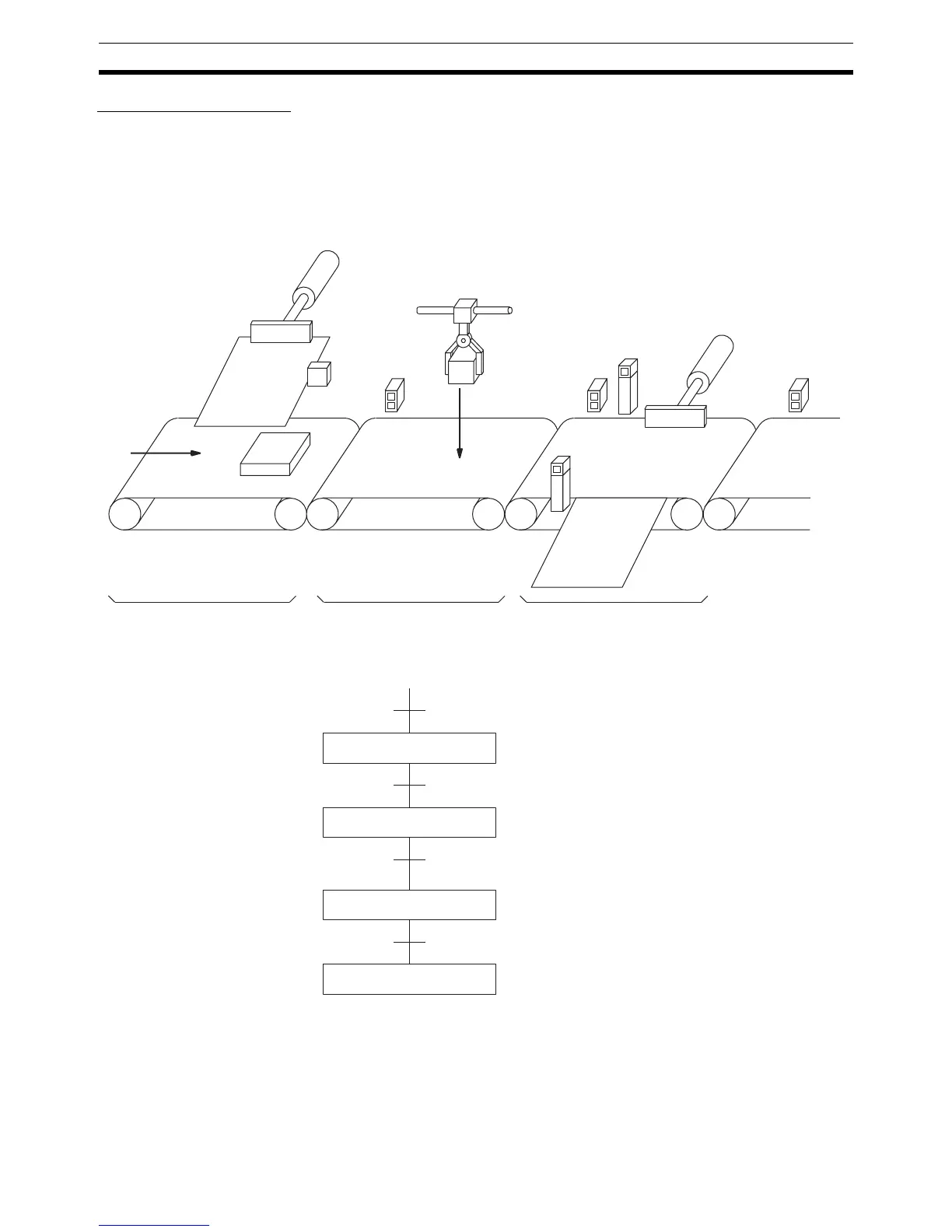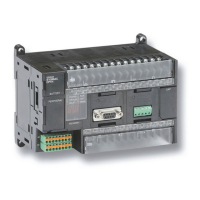920
Step Instructions Section 3-22
Application Examples The following three examples demonstrate the three types of execution con-
trol possible with step programming. Example 1 demonstrates sequential exe-
cution; Example 2, branching execution; and Example 3, parallel execution.
Example 1:
Sequential Execution
The following process requires that three processes, loading, part installation,
and inspection/discharge, be executed in sequence with each process being
reset before continuing on the next process. Various sensors (SW1, SW2,
SW3, and SW4) are positioned to signal when processes are to start and end.
The following diagram demonstrates the flow of processing and the switches
that are used for execution control.
The program for this process, shown below, utilizes the most basic type of
step programming: each step is completed by a unique SNXT(009) that starts
the next step. Each step starts when the switch that indicates the previous
step has been completed turns ON.
SW 1
SW 2
SW 3
SW 4
Solenoid 1
Robot hand
Solenoid 2
Conveyor belt 1
Loading
Conveyor belt 2
Part installation
Conveyor belt 3
Inspection/discharge
Photomicro-
sensor
SW1
SW2
SW3
SW4
Process A
Process B
Process C
Loading
End
Part Installation
Inspection/discharge
